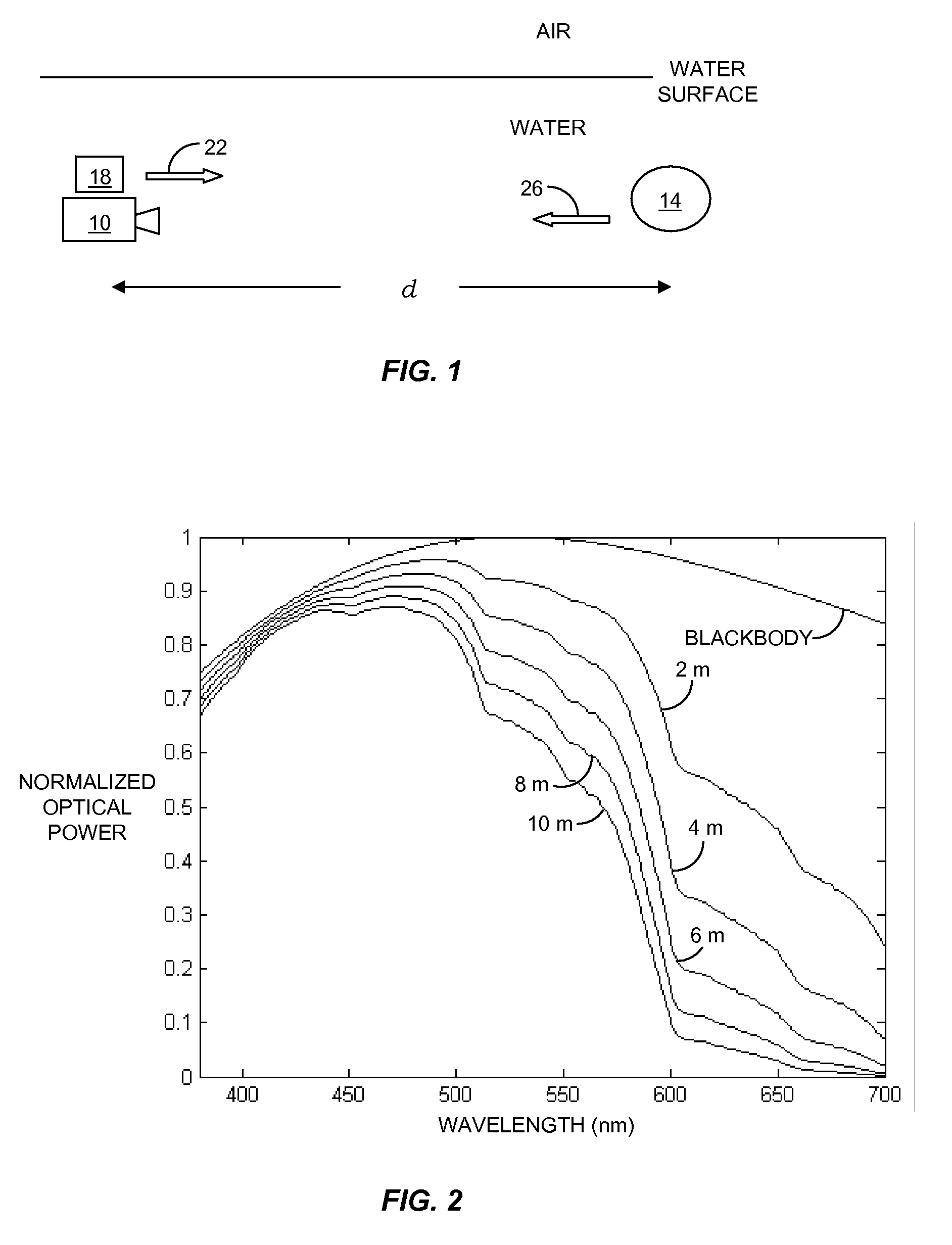Adaptive Illumination for Color-Corrected Underwater Imaging
a technology for underwater imaging and adaptive illumination, applied in the field of illumination of underwater objects, can solve the problems of wavelength-dependent losses, inability to adapt to underwater propagation, and inability to achieve the effect of adjusting the illumination intensity
- Summary
- Abstract
- Description
- Claims
- Application Information
AI Technical Summary
Benefits of technology
Problems solved by technology
Method used
Image
Examples
Embodiment Construction
[0025]In brief overview, the invention relates to a method and an apparatus for color-corrected underwater imaging. A range to an underwater object to be imaged is determined and control values are selected according to the range. Control values are predetermined for a number of ranges according to an optimization of a color quality factor for each range based on the spectra of the optical sources used for illumination and the wavelength-dependent optical transmission of the water for the range. The optical power of each optical source is controlled according to a respective one of the selected control values. Advantageously, an acquired image requires no color correction as the adaptive illumination compensates for the wavelength-dependent losses in the light propagation path from the optical sources to the object and from the object to the imaging device. The method and apparatus can be used for a broad range of underwater imaging applications, including photography, prospecting, ...
PUM
 Login to View More
Login to View More Abstract
Description
Claims
Application Information
 Login to View More
Login to View More - R&D
- Intellectual Property
- Life Sciences
- Materials
- Tech Scout
- Unparalleled Data Quality
- Higher Quality Content
- 60% Fewer Hallucinations
Browse by: Latest US Patents, China's latest patents, Technical Efficacy Thesaurus, Application Domain, Technology Topic, Popular Technical Reports.
© 2025 PatSnap. All rights reserved.Legal|Privacy policy|Modern Slavery Act Transparency Statement|Sitemap|About US| Contact US: help@patsnap.com



